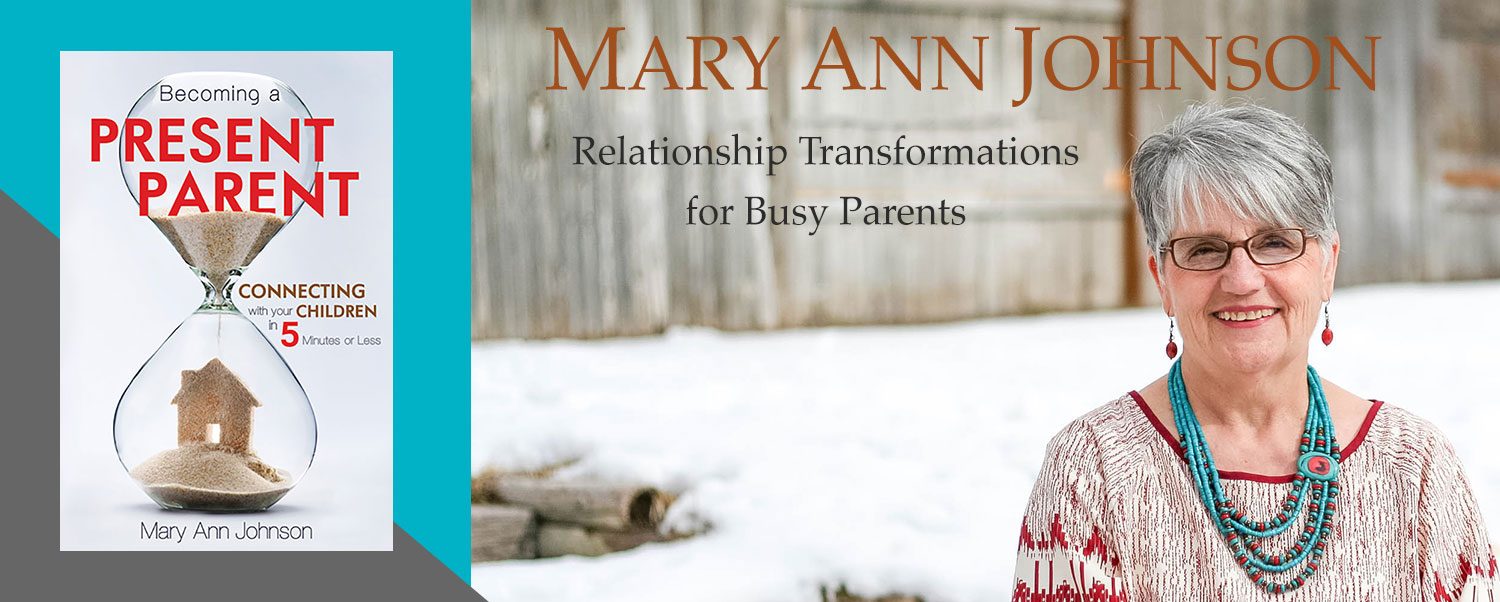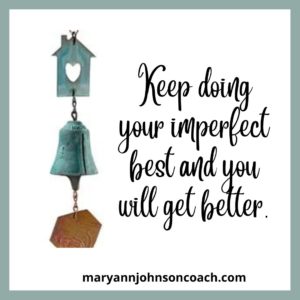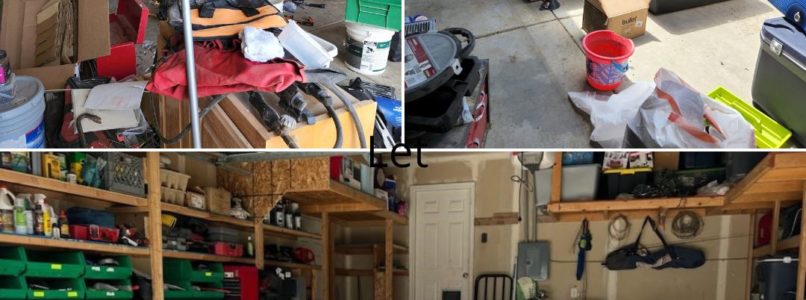 Last week’s article was vulnerable, and I got lots of emails from women who appreciated my candor. I am relieved. : )
Last week’s article was vulnerable, and I got lots of emails from women who appreciated my candor. I am relieved. : )
Each week I need to get my article written, formatted, and scheduled, the newsletter written and formatted, and the podcast recorded by Friday night. That is because I NEED Saturday for myself, to do what matters to me. I work diligently to make this happen.
I want to share what I experienced on Friday night and Saturday morning just before that article posted at 9 am Sunday because it is precisely what the article was about. This will not be any easier to write than last Sunday’s article but you are all moms, grandmothers, and women. We struggle with many of the same things, and I know what happened will bring home the message from last Sunday’s article.
Ah, Expectations!
As I said, I work hard to make Saturday my day, as much as that is possible. On Tuesday, I told my husband that on Saturday, I planned to spend the entire day in the yard, and he would need to fix breakfast and lunch. We didn’t have any obligations or appointments that I knew of. I wanted to transplant a dozen plants out to the garden, clean the patio boxes, weed eat, cut down the tree-sized weeds by the chicken coop, and cut back the ornamental grasses.
I want you to know that I LOVE hard labor. I am a crazy woman, I know, but I like the sun, the air, the hoe in my hands, and even working on my knees. This was going to be an amazingly restful, rejuvenating, and satisfying Saturday, despite the work.
Thursday night things began to unravel. There were activities Saturday that would require either Don’s or my attention at home and in the house. But Don knew my plan, right!
Friday evening, I reminded Don that I was going to be in the yard all day Saturday, and he would need to watch Maggie from 10 until 3 and take care of breakfast and lunch. He said, “Wait, can’t I go to Jack’s football game?” I came uncorked. I stood up and strode across the room while yelling, “I told you I needed this Saturday for me,” and I slammed the bedroom door behind me.
The next morning I got up early because I had a lot to do. I thought about the night before. I had to ask myself, “Why were you so mad that you couldn’t respond like an adult.”
I have been practicing controlling my stories for over a decade and I am very good at it. This was a chance to practice some more. LOL I wanted to blame Don for my anger because he had forgotten my Saturday plans but I knew that wasn’t the real reason I was angry.
I knew what it was. I mentioned it in Sunday’s article – if it’s to be it is up to me. I am on my own. I wasn’t going to get the support I needed to do what mattered to me. This is a very old story from my childhood. It rears its ugly head from time to time. It isn’t hard to ferret out.
I also know it is a LIE. My family loves me very much. My husband cares and does his best to be my friend and sweetheart. I have friends that would come to my aid if I asked.
So, what was really happening here? I realized I felt angry in that Friday night moment because my life is different than I planned. I take care of my grands. I care for my mom who can’t care for herself. I care for my sweetheart because he needs help. I don’t speak or teach much anymore. I stood at the sink and wanted to blame someone, maybe God, my circumstances, or others.
My Life is a Choice
However, I had to be honest, I have chosen this life. When Jodie moved 30-minutes away we knew we would not be able to help her as much. We thought about combining our households. I thought about it for 3 months and then I choose to move to Jodie’s home.
When it became obvious that my mother was no longer able to care for herself my sisters and I had to decide, whether we would put her in a nursing home or one of us would care for her. We had many conversations. In the end, I decided to take her. I had learned to be flexible, so I felt I could deal with what comes with Alzheimer’s. I was self-employed, so my schedule was my own. We lived on a mini-farm and she could have her chickens and dog. Again, I put a lot of thought into it and made a clear-headed decision to bring her to our home.
After the first year, I needed to make some decisions about traveling, teaching and speaking. It wasn’t an easy decision and didn’t come overnight. It took me some months to determine how I felt. I decided I could write weekly and that would be enough to continue impacting moms I had come to love.
This year I took on a couple of things that I wanted to do but they have caused me work and stress. I have done well and learned a lot, but the feelings of worry and stress that come with new things joined the fray in my mind and heart Friday night and Saturday morning.
All this thinking, pondering, and being honest happened in that first early morning hour on Saturday as I stood at the sink cutting fruit to dry. However, knowing the truth didn’t take my angst away. I knew I wasn’t done, even though I had sorted out the story. I knew I needed outside support. I didn’t want to call the person I knew could help me the most because I was so emotional, and I didn’t want to bother them. I was fighting the inner battle I wrote about last Sunday.
Then the contents of the article I had written for all of you came into my mind. I made the call. After all, you have to live what you preach. : ) It was a helpful half hour. My friend said, “Thank you for letting me talk you off the cliff.” And there it is. I know what I know, and I share it with you, but I, like you, must decide to use that knowledge.
Let’s Be Wise
That is the definition of wisdom, using what you have learned. Let’s all be wise and reach out for support and help when we need it. Let’s control our stories. Let’s seek the resources we need to heal and grow.
This last week my daughter texted this photo to me. She said, “I thought you would like this picture of a tree making the best of its surroundings. I thought of you right away when I saw it.” That is a legacy I am proud to leave my children. They have seen me learn to search out what I need so I can thrive in difficult circumstances. I have some adult children in that process now, and I am very proud of them!
Let’s not be afraid to be vulnerable, to let others know we don’t know it all and we are not perfect. Allow yourself to find the resources you need to become a better, more whole human being.



 Years ago, I spoke in a church meeting. I had a thoughtful presentation ready. As I sat on the stand waiting my turn, I had a clear thought, “Mention that you were sexually abused as a child.” I was horrified and replied in my mind to that still, small voice, “I don’t want to.” The thought came again, and I replied, “When you tell people stuff like this, they look at you differently, they treat you differently.” Again, a third time I had the same thought. I sat there resisting. I had no intention of sharing that bit of information even though it would fit in with the topic I had chosen to speak on.
Years ago, I spoke in a church meeting. I had a thoughtful presentation ready. As I sat on the stand waiting my turn, I had a clear thought, “Mention that you were sexually abused as a child.” I was horrified and replied in my mind to that still, small voice, “I don’t want to.” The thought came again, and I replied, “When you tell people stuff like this, they look at you differently, they treat you differently.” Again, a third time I had the same thought. I sat there resisting. I had no intention of sharing that bit of information even though it would fit in with the topic I had chosen to speak on.
 When I was a mother raising seven children, I learned some hard lessons. I wish I had learned them sooner but learn I eventually did. I haven’t forgotten these lessons and I live what I learned back then. It is still making a difference.
When I was a mother raising seven children, I learned some hard lessons. I wish I had learned them sooner but learn I eventually did. I haven’t forgotten these lessons and I live what I learned back then. It is still making a difference.
 In September, I took a rest. I had traveled to Colorado in late August to help a daughter having surgery and was repeating that trip for the same reason early in September. I knew I was going to
In September, I took a rest. I had traveled to Colorado in late August to help a daughter having surgery and was repeating that trip for the same reason early in September. I knew I was going to 
 You don’t always know the impact for good you have on your kids and others, even when you aren’t perfect. Just a couple of weeks ago this was brought home to me. I went to my sister’s home and her daughter was there with her son Jordan.
You don’t always know the impact for good you have on your kids and others, even when you aren’t perfect. Just a couple of weeks ago this was brought home to me. I went to my sister’s home and her daughter was there with her son Jordan. he was four and five, he came to my home to be babysat now and then. Deidra, his mom, reminded me of this. I had totally forgotten that I cared for Jordan. She also reminded me of something else.
he was four and five, he came to my home to be babysat now and then. Deidra, his mom, reminded me of this. I had totally forgotten that I cared for Jordan. She also reminded me of something else. When Jordan came to my home, he fell in love with a chime I had. It had a lovely bell on the end. He would stick it in the back pocket of his shorts and prance around to hear it ring. I gave it to him as a gift. Jordan was standing there as his mom related this story to me. He smiled. What his mom said next blew me away. “You still have that chime in your room, don’t you Jordan.” He nodded yes.
When Jordan came to my home, he fell in love with a chime I had. It had a lovely bell on the end. He would stick it in the back pocket of his shorts and prance around to hear it ring. I gave it to him as a gift. Jordan was standing there as his mom related this story to me. He smiled. What his mom said next blew me away. “You still have that chime in your room, don’t you Jordan.” He nodded yes.
 Recently, I was sitting at my desk in the corner of my bedroom. My husband was sitting on the bed watching me. Then he said, “Looking at you in your corner is an indication of your life.”
Recently, I was sitting at my desk in the corner of my bedroom. My husband was sitting on the bed watching me. Then he said, “Looking at you in your corner is an indication of your life.” My office corner is one of those places. Let’s look at what is on the walls. I have a beautiful painting of me shedding baggage. It was a dream I had decades ago, and a cousin painted it for me. I am a seeker, a learner, and a changer, just like Don said. I always have been. This dream came at a hard time in my life and was given as a gift to remind me that I could heal, grow, change, and impact others for good.
My office corner is one of those places. Let’s look at what is on the walls. I have a beautiful painting of me shedding baggage. It was a dream I had decades ago, and a cousin painted it for me. I am a seeker, a learner, and a changer, just like Don said. I always have been. This dream came at a hard time in my life and was given as a gift to remind me that I could heal, grow, change, and impact others for good. I have my ‘Who I Am’ poster. Two decades ago, I wasn’t sure who I was. So, I picked a picture of a girl, nothing like me at the time. She was happy, bright, and smiling. Then I free-wrote inside her body what came into my mind. For over a year, I would stand in front of this ‘me’ and recite all the wonderful ways of being that are mine. It was life-changing!
I have my ‘Who I Am’ poster. Two decades ago, I wasn’t sure who I was. So, I picked a picture of a girl, nothing like me at the time. She was happy, bright, and smiling. Then I free-wrote inside her body what came into my mind. For over a year, I would stand in front of this ‘me’ and recite all the wonderful ways of being that are mine. It was life-changing! There is a stack of books on the desk, those I most want to read soon. In my bathroom, by my bed, and on the corner of my table are three I am currently reading. I LOVE reading but I have very little reading time, so I have become creative.
There is a stack of books on the desk, those I most want to read soon. In my bathroom, by my bed, and on the corner of my table are three I am currently reading. I LOVE reading but I have very little reading time, so I have become creative.  On the wall, by the side of my bed, I have
On the wall, by the side of my bed, I have  I have a basket by my dining table. In it are my gratitude journal, my daily
I have a basket by my dining table. In it are my gratitude journal, my daily affirmations folder, and my core spiritual cannon. I write 3 things I am grateful for every day, I read in my spiritual cannon, and I recite my affirmations. Do I get it done every day? I wish I could say yes but, on a day when I have to get Maggie, my granddaughter up, feed and dress her, brush her teeth and hair, and give her meds, I might not. But I work to get to it even if it is just before bed. If I don’t get to it, I do it the next day.
affirmations folder, and my core spiritual cannon. I write 3 things I am grateful for every day, I read in my spiritual cannon, and I recite my affirmations. Do I get it done every day? I wish I could say yes but, on a day when I have to get Maggie, my granddaughter up, feed and dress her, brush her teeth and hair, and give her meds, I might not. But I work to get to it even if it is just before bed. If I don’t get to it, I do it the next day.
 I was not a perfect parent! Of course, you know that because there are no perfect parents, any more than perfect people. However, it shocks me when I see a poor behavior from my parenting days that has crept into my grandparenting days. Being with children is like being under a microscope, where your strengths and weaknesses are enlarged for you to view.
I was not a perfect parent! Of course, you know that because there are no perfect parents, any more than perfect people. However, it shocks me when I see a poor behavior from my parenting days that has crept into my grandparenting days. Being with children is like being under a microscope, where your strengths and weaknesses are enlarged for you to view.
 Yesterday, after an hour’s drive, I spent the day helping a friend clean and organize her garage. Wow, it was a hot day, punctuated by a downpour, in the afternoon. I got to work with her sons which was a treat. They did good. : )
Yesterday, after an hour’s drive, I spent the day helping a friend clean and organize her garage. Wow, it was a hot day, punctuated by a downpour, in the afternoon. I got to work with her sons which was a treat. They did good. : )

 I have a friend, Nicole. She was a solopreneur, and a single mom, who homeschooled her two boys. That was a load to carry, however, Nicole manages well. That wasn’t always the case.
I have a friend, Nicole. She was a solopreneur, and a single mom, who homeschooled her two boys. That was a load to carry, however, Nicole manages well. That wasn’t always the case.